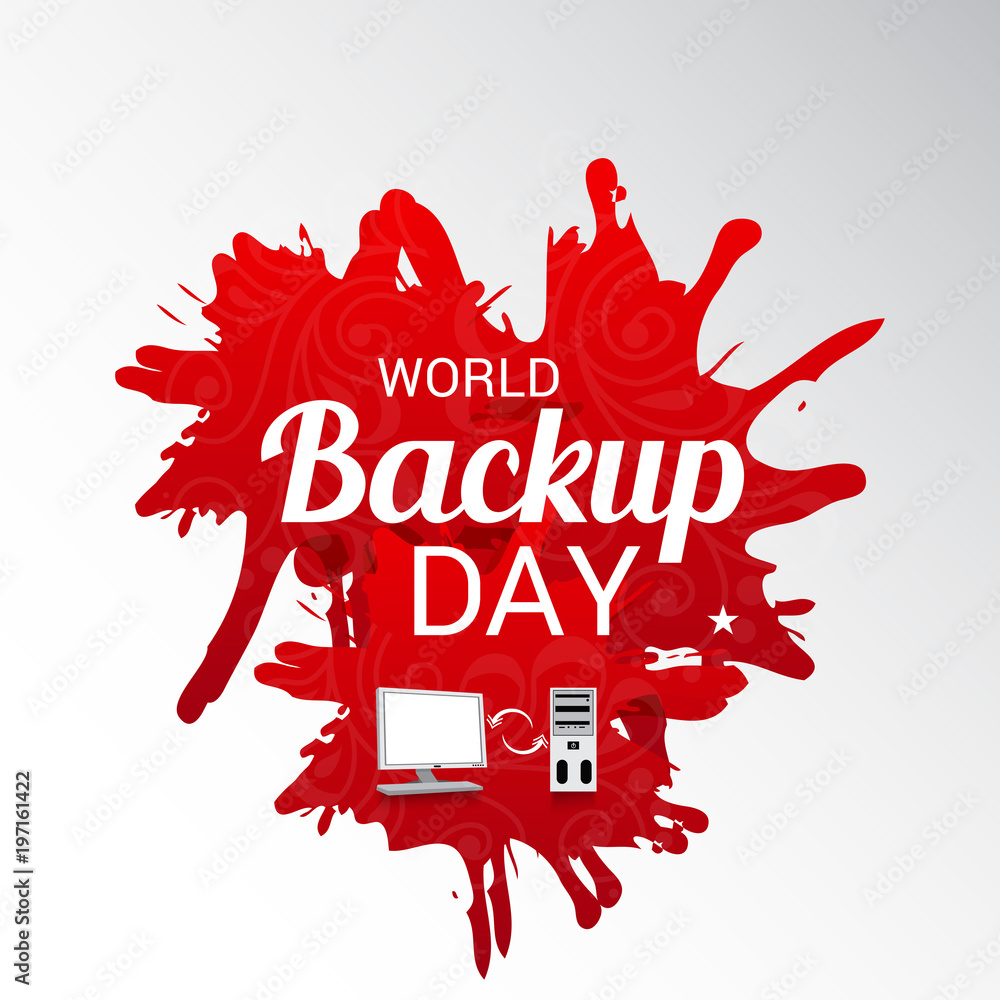March 31st, 2022 – Happy World Backup Day!
It’s that time of year when the tech community reminds people to back up their data before they lose it by accident or by malicious events. If you’re part of the 21% of people who have never made a backup of their data before, we are especially talking to you!
You’ve probably had a moment where a file was lost, corrupted, inaccessible, destroyed, or damaged at some point and we all know how frustrating that can be. Let’s take a moment to talk about the importance of regularly backing up your data, best practices, & the various options you have for backing up your data.
What is a Data Backup & Why is it Important?

According to World Backup Day
-
- 29% of data loss is accidental
-
- 113 phones lost or stolen per minute
-
- 30% of computers already infected with Malware
A backup is a digital copy of any important file or data. The most common files people tend to backup include personal photos & videos, important financial & legal documents, emails, & contact information. Users will create backups in order to prevent losing the data they care about most, especially since it’s so easy to accidentally delete something.
According to the official website for World Backup Day,
29% of data loss cases are caused by accidents.
When it comes to malicious events that lead to data loss, the need to backup your data becomes even more apparent. World Backup Day also reports that 113 phones are lost or stolen every minute & that 30% of all computers are already infected with malware. The last thing we wish for anyone is to have these malicious events corrupt your data to the point of no recovery so we urge you to run a thorough backup so you can always recover your files & information! Whether you accidentally deleted a single file or you need to restore your entire device, backing up your data is one of the most important steps in practicing good Cyber Hygiene methods.
Stay tuned as we will cover more about data loss in future blog posts.
Best Practices for Data Backup
Considering we are in the business of Data Protection & Cyber Hygiene, we tend to back up our data more frequently than once per year & highly recommend you do the same. That said, we think it’s time we review our personal & professional files to double-check that we’ve backed up everything we want to keep safe!
Let’s try a quick exercise, think about how many photos you take in a week or all the important emails you receive each month. Now think about if those files or information can easily be replaced. Odds are, the value of that data is much greater than the value of the device & the sentimental photos & videos are probably invaluable.
OQPS highly recommends backing up all important data to at least one other source. If you really want to secure your data, you can back up your files & information to both a physical state drive & a cloud storage system. Recommended data to backup include address books, pictures, videos, music files, emails, documents, spreadsheets, financial information, & more. For businesses, this also includes customer databases, configuration files, operating systems, & registry files.
For best practices, don’t rely 100% on 3rd parties such as cloud services or your email box to keep important docs. Instead, back up the most important items to both a physical state & an online service backup drive. Also, you shouldn’t save files to your desktop as they could corrupt during a malfunction & you’ll permanently lose your data.
For more assistance with backing up your business data, you can request a Free Consultation with OQP Solutions.
Data Backup Storage Options
When backing up your data, you have 2 basic options for choosing the storage space: physical state drives & cloud storage drives. A majority (if not all) of mobile devices make it super easy to connect to cloud storage systems such as Google Drive, iCloud, & more. These backups can be set up during the initial device setup or by setting up later. Physical state drives such as flash drives, external hard drives, & SSD cards (solid-state drives) offer an extra layer of protection from malicious attacks when stored offline.
When strategizing your data backup, consider the recovery point objectives (RPO) and the recovery time objectives (RTO). RPO is the amount of time between your backups, whether that is every night during rest hours or once per month. The less time between backups, the less data & information you will lose! RTO is the time it takes to restore your data. Although there is only so much you can do with physical state drive backups, cloud storage systems can be upgraded for faster recovery speeds to keep your business running without delay.
The biggest benefit of performing regular backups & auditing them for accuracy is that it allows you to recover quickly. Having a dedicated system & strategy for your data backups saves your business time and money because the restoration process is easy and you never have to worry about losing valuable files & information. All you have to do is click “restore” in most cases!
Here are some basic guides on how to backup your devices.
This process may vary by manufacturer.
Cloud Backup Walkthroughs

Take the Pledge – Back Up Your Data!
Take the pledge to back up your data & sign up to our email list to receive more useful Cyber Hygiene tips & tricks. With the risks of losing your data to malicious events or accidental malfunctions, make sure you’re backing up your information 2x per week on both a cloud system & physical state drive. By diversifying your backups & regularly saving copies, you reduce the costs & time it takes to get your business up & running again. Drop a comment with any questions!

Cyber Hygiene Newsletter by OQP Solutions
Subscribe to our mailing list to stay up to date with all the latest trends, tips, tricks, & industry news. Coming Soon: Cyber Hygiene Webinars.
